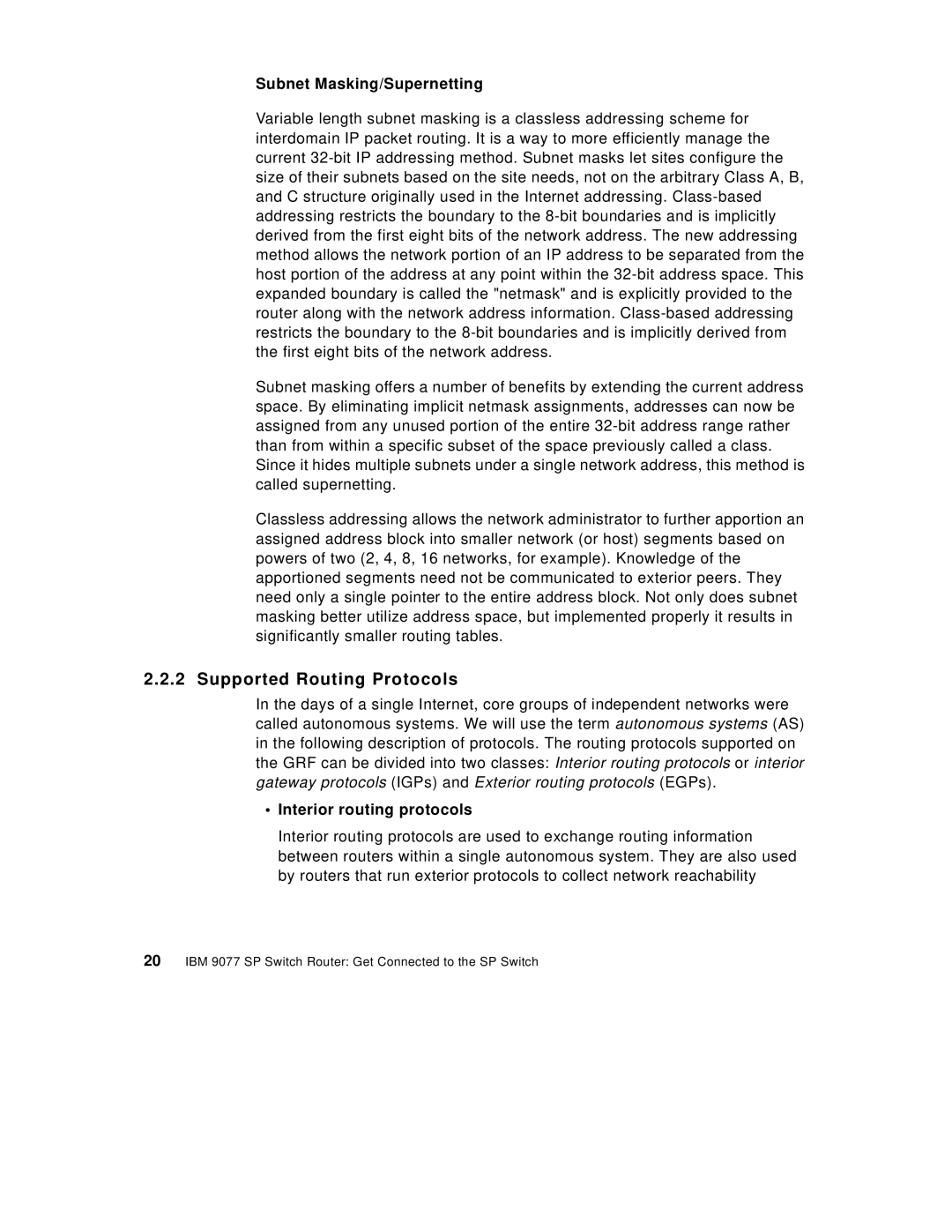Subnet Masking/Supernetting
Variable length subnet masking is a classless addressing scheme for interdomain IP packet routing. It is a way to more efficiently manage the current
Subnet masking offers a number of benefits by extending the current address space. By eliminating implicit netmask assignments, addresses can now be assigned from any unused portion of the entire
Classless addressing allows the network administrator to further apportion an assigned address block into smaller network (or host) segments based on powers of two (2, 4, 8, 16 networks, for example). Knowledge of the apportioned segments need not be communicated to exterior peers. They need only a single pointer to the entire address block. Not only does subnet masking better utilize address space, but implemented properly it results in significantly smaller routing tables.
2.2.2 Supported Routing Protocols
In the days of a single Internet, core groups of independent networks were called autonomous systems. We will use the term autonomous systems (AS) in the following description of protocols. The routing protocols supported on the GRF can be divided into two classes: Interior routing protocols or interior gateway protocols (IGPs) and Exterior routing protocols (EGPs).
•Interior routing protocols
Interior routing protocols are used to exchange routing information between routers within a single autonomous system. They are also used by routers that run exterior protocols to collect network reachability
